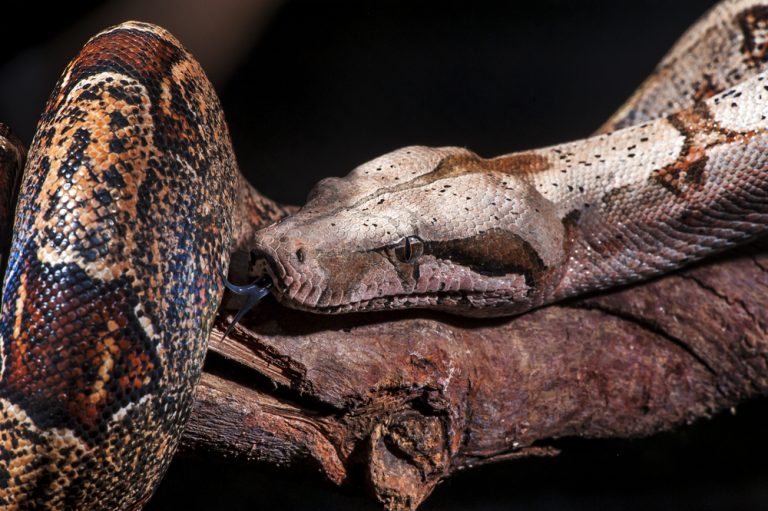

Coloring is essential for the boa constrictors since it is an effective camouflage tool in the forests and jungles of Central and South America, where they are mainly found due to the humidity of the rainforests. The patterns are prominent near the tail, as seen in the red-tailed boa. The general appearance of a boa constrictor is that they are cream, brown, or grey with brown and red patterns. Boa constrictors swallow their prey whole, and after a huge meal, it might go for weeks without hunting. Their hunting technique generally involves ambushing the prey which includes monkeys, wild pigs, rats, and birds then using their powerful muscles to constrict them to death. Boa Constrictorīoa constrictors are powerful, making them stealthy hunters. As they are nonvenomous, they subdue their prey by constricting them to death. These snakes prey on small animals like rats, mice, and chipmunks. As a result, they are known by other names such as Malaysian blood python, red short-tailed python, Brongersma’s short-tailed python, red blood python, or Sumatran blood python.Ī mature blood python grows to 5-8 feet in length and is usually heavily built with muscles. Typically, these snake species are found in palm plantations, tropical swamps, marshes, tropical forests, and the outlying islands of the Malaysian peninsula and eastern Sumatra.

The blood python is a medium-sized nonvenomous snake found in Thailand, Sumatra, and the Malay Peninsula. Due to its size, the ball python preys on small animals, such as rodents. After, the snake swallows the prey whole. Just like other members of the python family, ball pythons capture their prey by coiling around them and squeezing them until the prey passes out and dies from suffocation. The ball pythons live along the forest edges or in the dry grasses of the Central and North African savannas. ‘Bal’ from ball python comes from its ability to coil itself completely into a ball as a defense mechanism when faced with a threat. They are among the common pet snakes due to their small size as they are relatively easy to care for and maintain. Ball Pythonīall pythons are categorized among the smallest of all the pythons and only mature to about three or four feet long. Related Article: Can Snakes See in the Dark? 2. Anaconda’s jaws are attached by stretchy ligaments allowing them to swallow the prey whole despite the prey’s size. Notably, their nasal passage and eyes are on top of their heads, which allows them to almost completely submerge themselves in water as they wait for their prey. These types of snakes are quick and stealthy in water but slow on land.

They are nonvenomous constrictors, and they coil their muscular bodies around their prey, squeezing it hard until it asphyxiates. Anacondas reside close to water bodies such as swamps, slow-moving streams, and marshes of the Orinoco basins in South America and the Amazon. The anaconda is a member of the Boa family and is the largest snake in the world. Conclusion Examples of Constrictor Snakes 1.


 0 kommentar(er)
0 kommentar(er)
